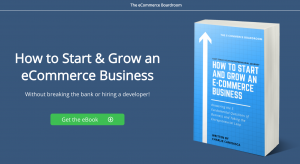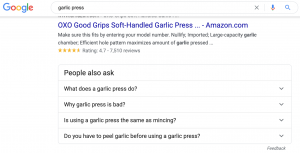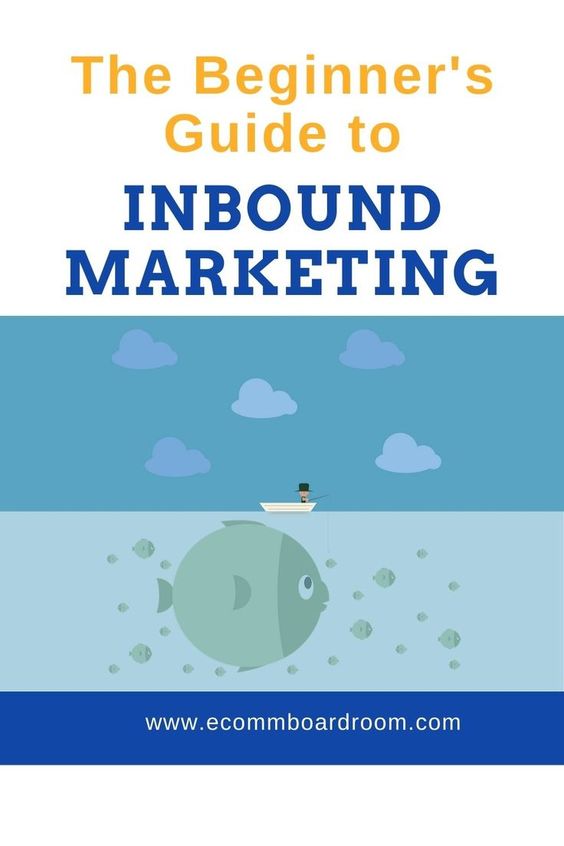Welcome! This is PART 2 of a 3 part series in which I will discuss the three components of a Systematic Marketing Strategy. Part 2 covers Inbound Marketing.
To review…
3 Components of a Systematic Marketing Strategy:
- Outbound Marketing
- Inbound Marketing
- Subscriber Marketing
What is Inbound Marketing?
As we’ve covered in previous articles, a popular metaphor for marketing is that of “fishing” for customers. Outbound Marketing has been likened to targeting and throwing a “spear” at your ideal prospects. In keeping with that metaphor:
Inbound Marketing can be thought of as the creation of “nets” that you encourage your customers to swim into.
With Inbound, we build websites, social media posts, blogs, profile pages, and landing pages that contain a link to an offer. We define our product, service, or value proposition in terms of the customer’s problems and desires (go back to StoryBranding). We target the relevant search keywords, hashtags, groups, and influencers.
And when we “raise our nets” into the boat at the end of the day, they are filled with nice, big, juicy fish.
The Purpose of Websites, Landing Pages, and Social Media Profiles
Think of your websites, landing pages, and social media profiles as our “Digital Headquarters”. When a prospect walks through the front door to check us out, we want them to be able to easily tell what product we sell, or (even better) what problems we solve for our customers. We also want to make it easy for them to make a purchase or leave us their contact info if they are interested in learning more.
The first step is to set up our Digital Headquarters for success. After that, we can focus on strategies to drive our ideal customers to HQ (or, steer the fish into your nets). First, let’s talk about your digital storefront: your eCommerce website.
Your eCommerce Business Website
The first and most important net is your website. When it comes to eCommerce site design, simplicity and clarity are key.
Steve Krug is a Web Usability consultant, expert, and author. In his famous book, Don’t Make Me Think, he outlines best practices for designing high-converting, user friendly websites. One of the primary takeaways is that people will scan your website – not read it. They will take the first reasonable action that they find to accomplish what they want to do. And if they can’t figure it out quickly, they will leave.
So for us, we must design websites (and in particular, Home pages) that:
- Are light on text
- Highlight our main value proposition (e.g. “We create master home chefs by providing cutting edge kitchen gadgets at an affordable price.”)
- Contain a clear call to action (e.g. “Click HERE to Shop”)
- Have very clear navigation
The part of a web page that is known as “Above the Fold,” is that which is visible as soon as the page loads, before the user has to scroll down. This all-important area of your site should contain the important elements mentioned above.
What If I Don’t Know How to Build a Website?
Fortunately, eCommerce website builders like Shopify make this insanely easy, even if you have no background in web development or coding.
Building a site using WordPress is a bit more involved, but in truth doesn’t require any coding and provides more flexibility with design and features. We will create a step-by-step guide on the eCommerce Boardroom site to help you create a WordPress Site!
Landing Pages
The second set of nets, Landing Pages (also known as Squeeze Pages), are in actuality a part of your website. But I wanted to devote a separate section to outlining the purposes and best practices involved because they are a fantastic weapon in your marketing arsenal.
A Landing Page as any web page that you intentionally direct visitors to that contains a single offer or call to action.
A great landing page should have no distractions and a very clear value proposition.
My recommendation would be to hide your header navigation menu on your landing page. You don’t want the viewer to be tempted to go read your Blog, About Us, or Home pages. You want them to see your offer, decide that it is right for them, and sign up. Here is an example Landing Page from the eComm Boardroom site:

See how little this page has going on? Remember, the goal of any landing page is to trade value for a new customer or subscriber. You want dollars, or an email address. Simple as that.
Social Media Profiles
The third and final nets to cover are your Social Media profile pages. The goal here is simple. If someone sees and is interested in a post you’ve made on social media, there is a good chance they will click your profile in order to check out your stuff. When they arrive, we want them to be able to:
- Learn about the primary problems you solve for your customers.
- Click on a link taking them to a landing page on your site.
Link Your Landing Page From Your Profile
Your profile page, regardless of platform, will have some area where you can add a Bio or About Me. Use your Brand Story to highlight your primary value proposition for your visitor. Close by inviting them to click the link in your Bio.
Your profile page will usually allow you to have at least one featured link to your site. Here, you should link your best and most relevant Landing Page. If the visitor is interested in the About Me, they will click through. Then, if you’ve set up your landing page the right way, you will have earned a new customer or subscriber.
That wraps up the discussion around creating “nets”. Hopefully you understand the value and key strategies involved in crafting websites, landing pages, and social media profiles that entice visitors to become subscribers and customers.
Now, let’s review the strategies for subtly directing fish to swim into the nets you have just created so beautifully. Otherwise known as Content Marketing.
What is Content Marketing?
Content Marketing is a subset of Inbound Marketing in which you create…well, content…that is curated according to the interests, problems, and preferred media of your ideal customer.
Content Marketing works best when you target the keywords, influencers, and groups where your ideal customer is already congregating. That way you can make use of the “traffic” that already exists online, funneling it towards your brand.
Let’s go over some of the most popular types of media that great brands use to create content.
Blogging for Search Engine Optimization (SEO)
The most popular content marketing strategy for eCommerce businesses is Blogging for Search Engine Optimization (SEO).
With this strategy, marketers start by researching the top search terms used by their potential customers. Then, they write well-formatted blog posts that respond to these commonly searched inquiries.
The idea is for Google to place your website near the top of search results, so that an interested visitor can find your page organically after conducting a Google search. This is known as “ranking” highly for a particular search term in Google’s Search Engine Algorithm.
Achieving this can result in free, consistent traffic to your store!
Keyword Research
To research common search terms in your niche, Google Keyword Planner is a solid free resource to get you started. For more sophisticated data, use SEMRush or Moz.
My favorite, free, DIY way is simply to use common sense and start by searching on Google.
Let’s say, for example, I was selling Garlic Presses on my store. I would start by heading to Google and searching something obvious, like “What is the Best Garlic Press to Buy”. This search term is probably highly competitive, and so it may be difficult to rank for it.
But, if you scroll down to the bottom of the page, you will see the “People also ask” section:

Here, you will find additional, related questions that people have searched frequently on google. These are probably less competitive and represent what are known as “Long-Tail” keywords. It will be much easier to rank highly for these keywords.
Create a Blog Post!
Once you’ve found a relevant Long-Tail keyword for which you want to rank, it is time to create your blog post! Make sure the post Title = your primary search term. These days, lengthier blog posts are performing better with Google SEO (1000 words or more).
There are many components to optimizing your post, including acquiring legitimate backlinks, relevance, site architecture, readability, images / alt text, and much much more. We won’t go into the level of detail needed to master SEO here, but suffice it to say that it is an industry of its own!
That’s why if writing, or SEO strategy, is not your cup of tea, you can always consider outsourcing your SEO / Blog to a freelance marketer. You can spend a ton of money for a top notch writer, but check fiverr.com for some inexpensive SEO authors.
Social Media Content Marketing
The second type of content marketing I wanted to discuss is Social Media Marketing. As discussed, Blog Marketing involves targeting keywords to try and allure your ideal customers into clicking through to your site when they are searching on Google.
With Social Media Marketing, you target groups, influencers, and hashtags to try and allure your ideal customers into clicking through to your profile and, ultimately, your site when they are using social media.
See the similarities? We already talked about how to establish your Social Media Profile as a part of your “Digital Headquarters” (or, as an enticing net). The remainder of this discussion will be around strategies for convincing the right social media browsers to click through to your profile.
Posting and Targeting Hashtags
Conventional wisdom in creating social media posts for your brand is, essentially, “the more the better.” A robust social media strategy is prolific. Regularly posting high-value, interesting content is the best way to gain traction on social media.
Some social media content marketing best practices:
- Post every day.
- Post engaging content that resonates with your ideal customers.
- Encourage your customers to like and follow and share your stuff on social media.
- Provide discounts or promotional products if they do.
- Include 5-20 of the most relevant hashtags in the first “comment” of each of your posts (not in the body of the post itself, as this may be penalized).
The goal is for the most exposure possible. That way, more and more individuals who have the problems that your brand can solve are able to find you online. When you consistently create engaging, beautiful, high-value content, you will find a correspondingly consistent funnel of people clicking through to your profile and following you.
And once they get to your profile, you will have already set up a brief overview of the problems you can solve for them (Your Bio) and a link to your landing page. Fish, meet net.
As always, you can outsource social media content creation to any number of digital agencies. And, once your business has some cash flow, you should!
Targeting Groups
Another strategy that works especially well on Facebook is to target the Groups (or Forums, Discussion Boards, etc.) where your ideal customers are congregating. If you are selling a course on “How to Start an Amazon FBA Business”, you can find countless Facebook Groups filled with thousands of people who are trying to do just that.
Some Facebook Group Marketing Best Practices:
- Comment and post regularly in the Group, but don’t ASK for anything. Simply provide value.
- Answer people’s questions, share helpful links, and provide resources.
- The result will be to encourage many people to click through to your profile, where they will find a link to your landing page.
- Create a relationship with the owner of the group. See the next section for more details.
The Dream 100 Strategy
I have a confession to make about the last component of Social Media Marketing that I want to discuss. This is probably more accurately considered an Outbound Marketing Strategy, not an Inbound one. But it made more sense to discuss it here. I hope you’ll forgive me!
The “Dream 100” is a concept first pioneered by Chet Holmes. The idea behind this strategy is to identify and target your Top 100 ideal clients, no matter how “big” they are. These are the people about whom you say “If I could just make THEM into a customer, my life would be changed forever.”
Chet Holmes says:
The goal of the Dream 100 is to take your ideal buyers from “I’ve never heard of this company” to “What is this company I keep hearing about?” to “I think I’ve heard of that company” to “Yes, I’ve heard of that company” to “Yes, I do business with that company.”
A Digital Marketer’s Take on the Dream 100
Russel Brunson, a modern Digital Marketing guru, has spun this concept to apply to eCommerce businesses. As we mentioned previously, your ideal customers are already congregating online. And in almost all cases, there is a single individual who OWNS each congregation. For example, each Facebook Group has an Admin. Or, an Influencer on Instagram might have a following of your ideal customers.
Do you see where we are going? The idea is to target the owners of your dream customer’s congregations.
If you can create a relationship with the owners of your ideal customer’s congregations, you can ask them for an interview, a shoutout, to collaborate, or to allow some other interaction with their list. The goal is to leverage THEIR authority and access THEIR following, in order to convince as many as possible to become YOUR subscribers / customers.
This is a long term and powerful marketing strategy that can pay off big time. Read Russel Brunson’s book, Traffic Secrets, for an in depth look at how to implement this strategy.
Wrap It Up, Chuck
And that concludes the Inbound Marketing overview article. You should be able to see how creating attractive “nets” (websites, landing pages, and social media profiles) works in tandem with the strategies for convincing fish to swim into them (content marketing).
Up next, we move on to the final component of a systematic marketing strategy for converting your ideal prospects into customers: Subscriber Marketing.


